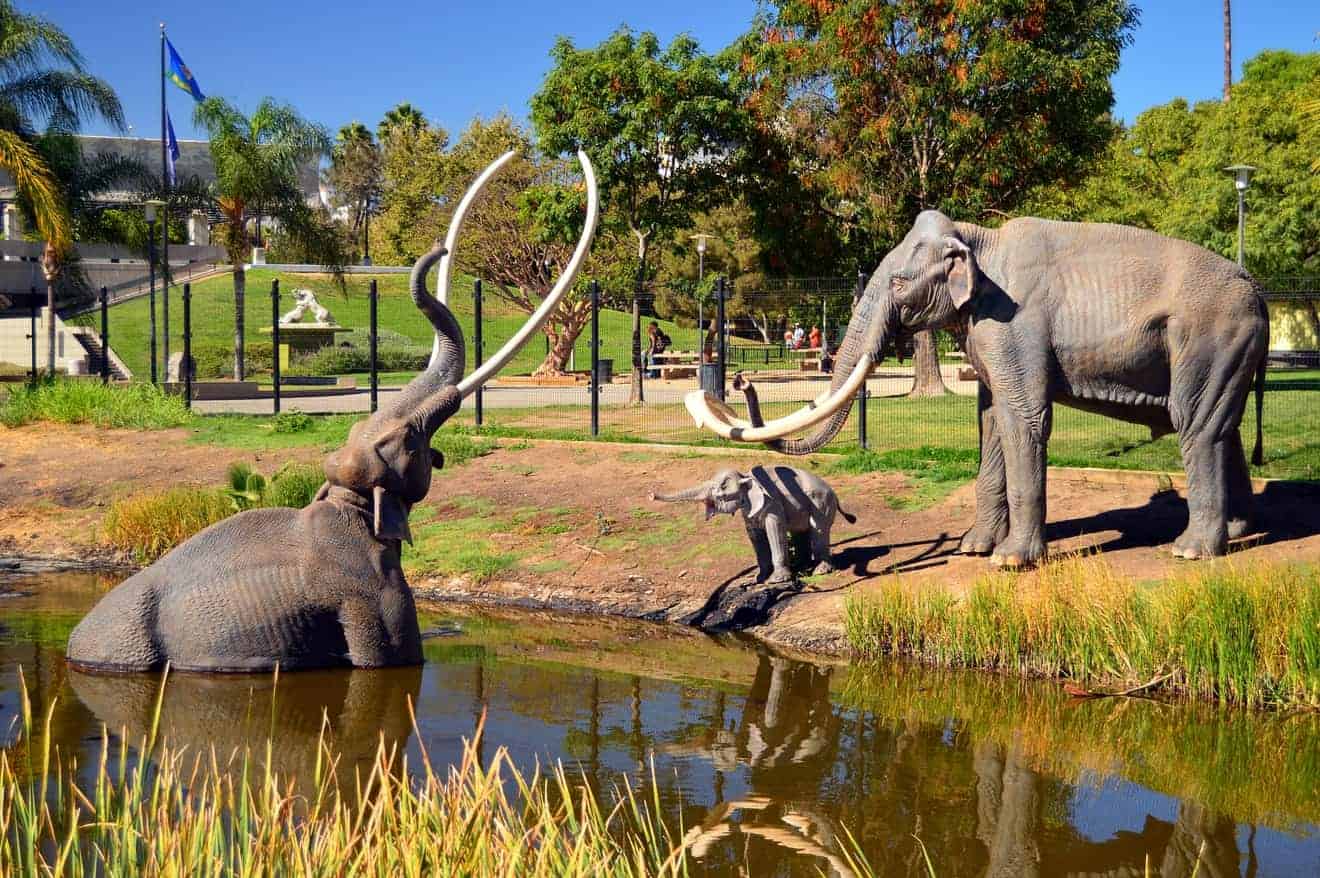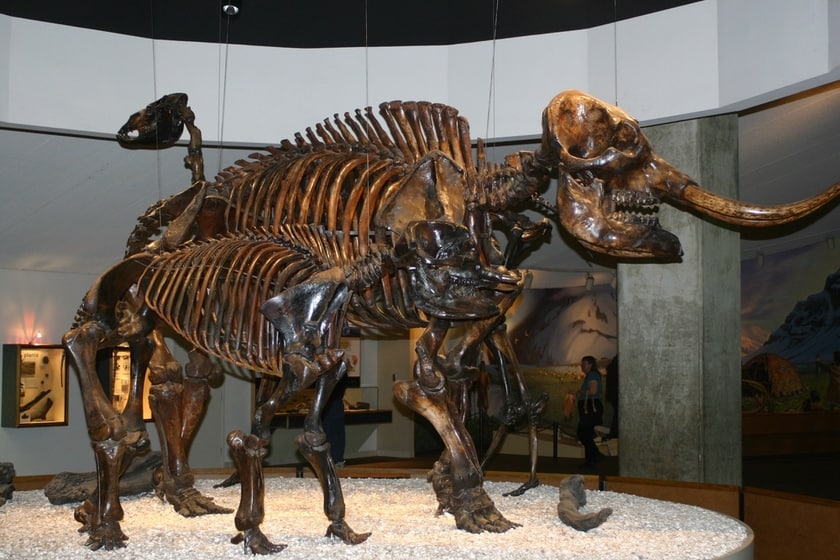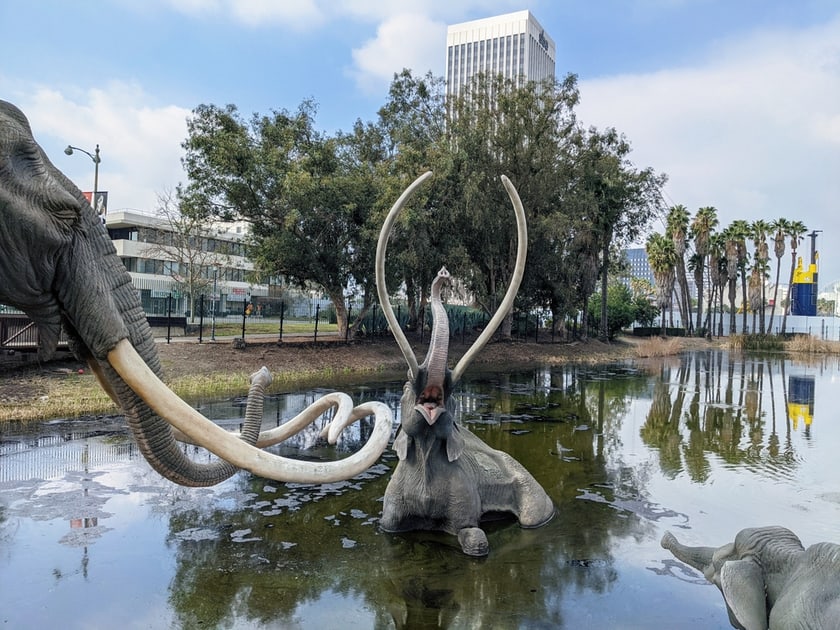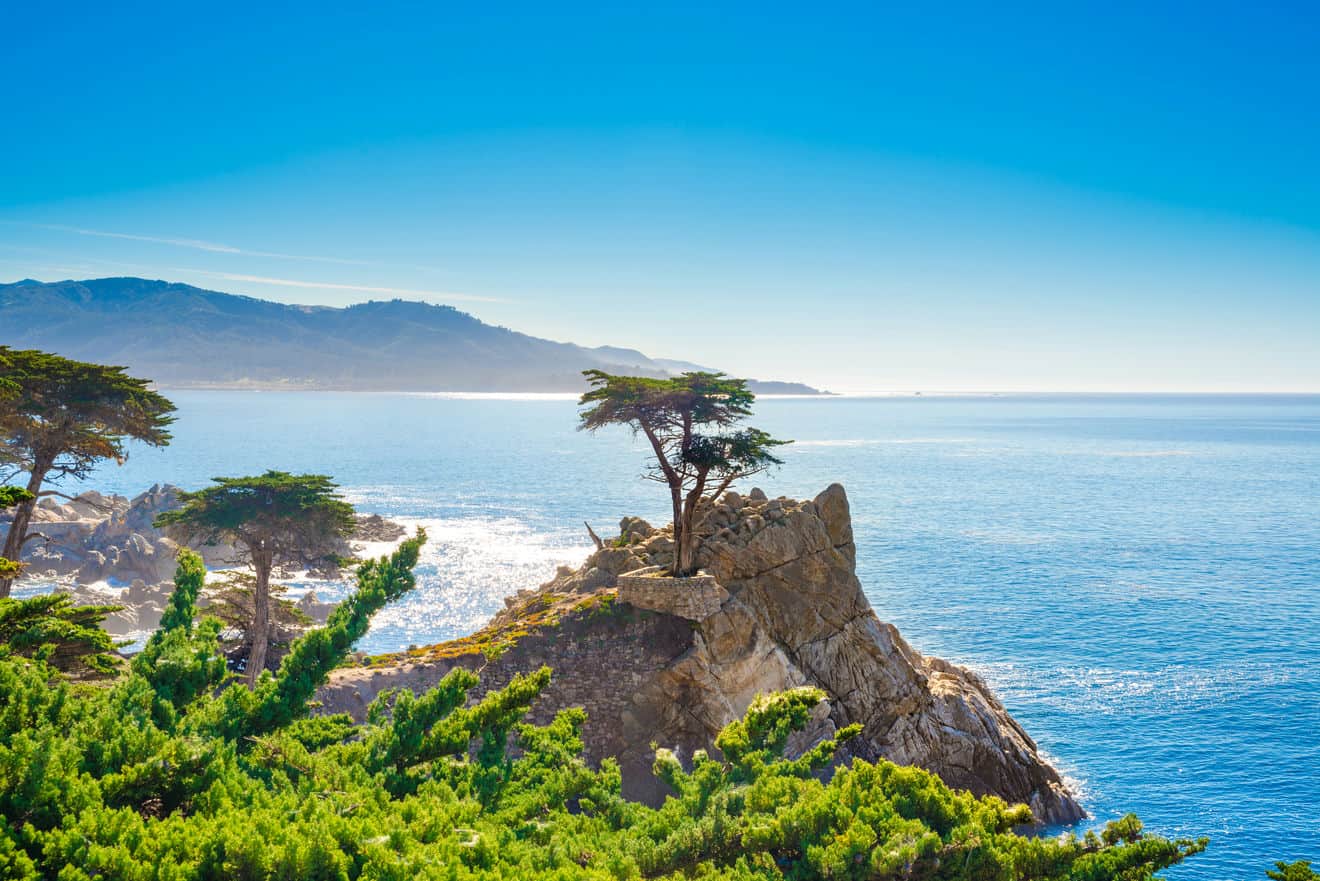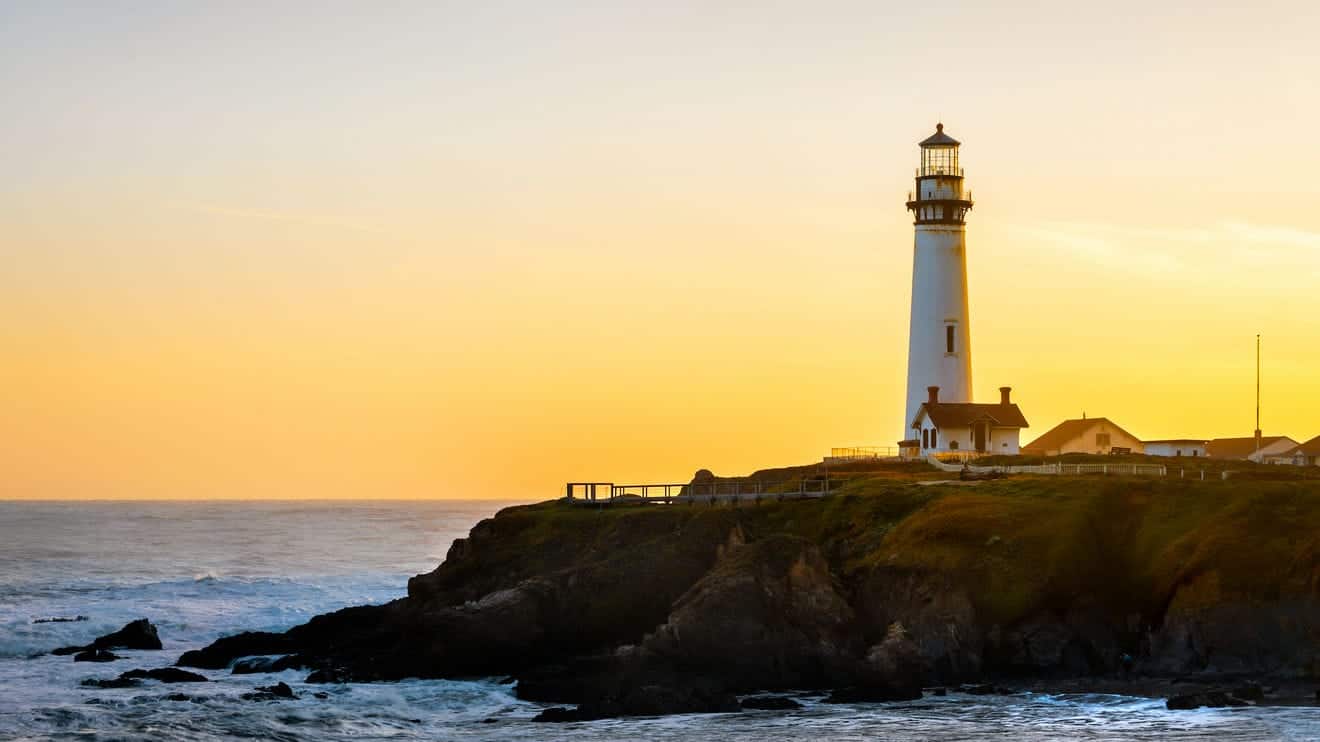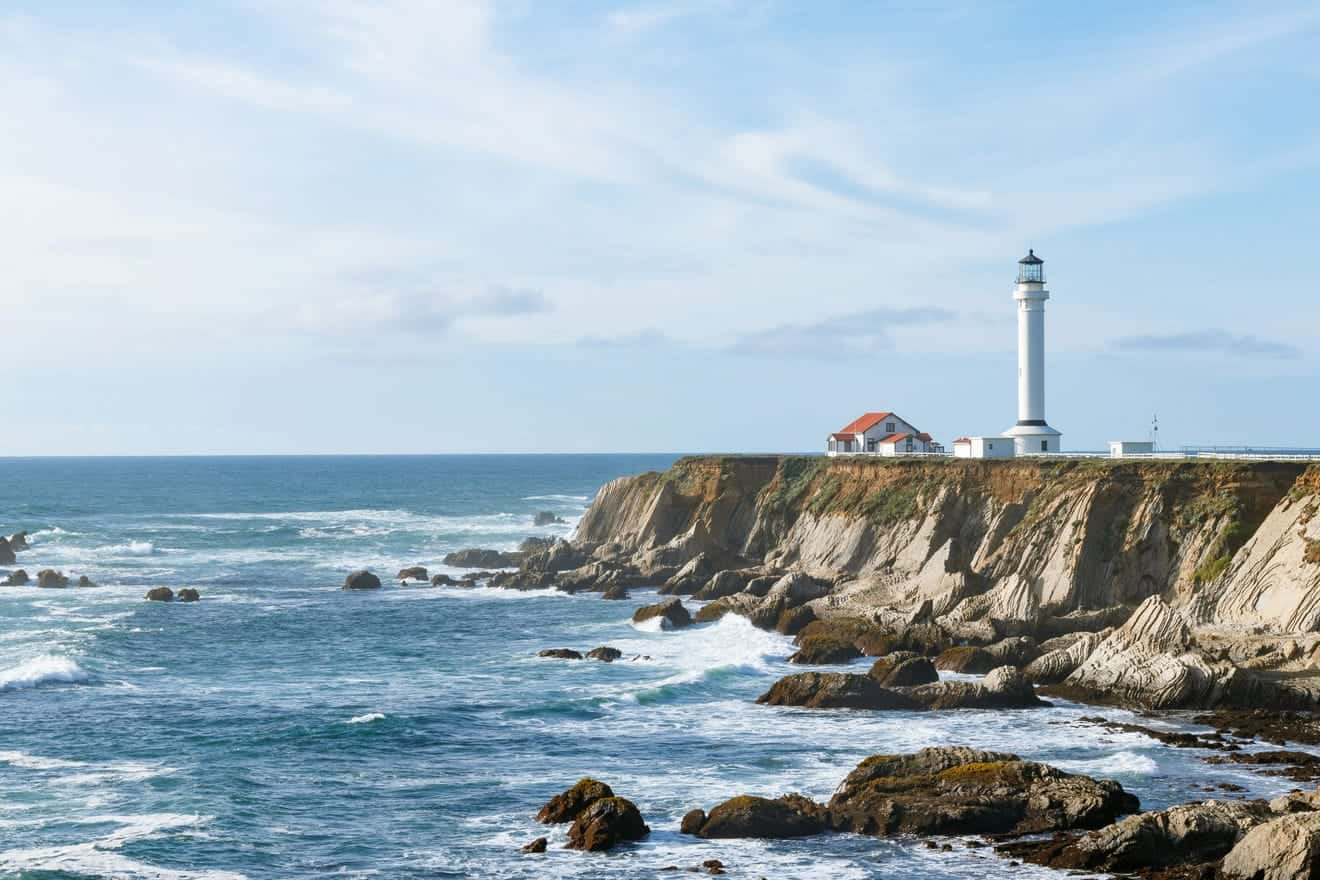Mammoths, saber-toothed tigers, prehistoric wolfdogs–those are just some of the animals you’ll find at La Brea Tar Pits and Museum in Los Angeles, one of the world’s most important paleontological sites with an attached museum (George C. Page Museum). Let’s get a better understanding of what it is and how to visit it.
Contents
La Brea Tar Pits History
La Brea Tar Pits is an important active archaeological dig site from which fossils dating back to the last Ice Age emerge almost daily. The site features a museum with an impressive collection of fossils and life-size reproductions of prehistoric animals and an outdoor area with large pits filled with tar that has solidified over the millennia, trapping whatever living things were nearby. In fact, the natural bitumen penetrating the ground created large holes into which animals, from insects to large living things, inevitably fell, and since they could no longer emerge from the viscous material, they died inside. The phenomenon is still present and, in fact, each pit is enclosed by wire mesh that allows visitors to view the area but without taking unnecessary risks. Consider, however, that after a visit your shoes will never be the same!!!
The large outdoor garden with more than 100 wells is the most famous and impressive attraction to visit, but if you want to discover more, I suggest you don’t miss a visit to the museum where you will understand what Los Angeles looked like between 40,000 and 10,000 years ago during the last ice age and how the fossils found are cleaned and studied, the live show with now-extinct animals magically coming back to life before your eyes, and maybe watching a movie in the 3D cinema room hosted by the museum.
Directions
The Brea Tar Pits is located at 5801 Wilshire Boulevard in the heart of Los Angeles. The museum is easily accessible by both car and public transportation.
- You can take the 20 or Fairfax bus and get off at Whilshire / Curson or the 20 or 786 and get off at Whilshire / Masselin. To learn how to use transportation in the city read our guide on transportation in Los Angeles.
- If you are driving, the museum has a parking lot located at the corner of Cursoi Avenue and 6th Street. You can access it from the west side of Curson Avenue. The parking lot is open from 6 a.m. to 10 p.m. and the cost is $15 daily. There are then some metered parking lots along the streets near the museum. Remember, however, that Monday through Friday from 7:00 a.m. to 9:00 a.m. and 4:00 p.m. to 7:00 p.m., it is prohibited to leave your car along Wilshire Boulevard as it may be taken away by the tow truck.
Tickets and Opening Hours
The La Brea Tar Pits is open from 9:30 a.m. to 5 p.m. every day Monday through Sunday, except Tuesday. It is also closed for Independence Day, Thanksgiving Day, Christmas, and New Year’s Day.
The cost of admission to the museum is $15 for adults, $12 for seniors and students, $7 for children between 3 and 12 years old.
The cost for the show at the museum’s 3D cinema is generally $6, as well as for the Ice Age Encounters show.
Should you be driving and decide to park at the museum’s parking lot, as written above, you will have to pay an additional $15 one-time fee.
La Brea Tar Pits Fossils
The La Brea Tar Pits and Museum houses the world’s largest and most diverse collection of assembled fossils dating back to the last Ice Age. The oldest pieces found date back 38,000 years. Walking through Hancock Park is free and most of the area is accessible, but I highly recommend that you also go inside the museum and enjoy the entirety of the experience to truly understand what this place represents.
Among the things to see outside:
- the Lake Pit which is the largest pit and where life-size mammoths and mastodons have been reproduced in fiberglass;
- project 23 and Pit 91 where archaeologists are at work daily digging for more fossils;
- pits 3, 4, 61, 67 from which fossils of horses, camels and bison have emerged;
- pit 9, probably the oldest pit, where the remains of as many as 30 different mammoths were found in 1914;
- pit 13, the first pit to be excavated and whose fossils are now housed in the museum;
- the Observation Pit, a pit housed inside a round building considered the first museum in La Brea;
- the Pleistocene Garden where you can understand the flora present in this area during the last ice age.
Inside the La Brea Museum you can admire the millions of fossils found inside the tar pits found in this part of Los Angeles. For more than a century, archaeologists and researchers have excavated, mined and studied the pieces you see on display in the museum’s galleries, and the reconstructions are mind-blowing. Huge ground sloths, saber-toothed tigers, a wall full of prehistoric wolfdog skulls, and the section devoted to giant mammoths will leave you speechless.
You will be able to admire a Colombian mammoth specimen found in Tar Pits and perfectly reconstructed: his name is Zed. And you will also have the chance to see a mummified baby mammoth. Finally, in the museum you will have the chance to find out how paleontologists work on fossils, the stages of cleaning and repairing broken or chipped parts, and the eventual assembly stage. There is also a section devoted to microfossils, from discovery and extraction to placement in the museum’s collections.
To enrich the experience and make it even more vivid, the museum’s 3-D cinema will allow you to go back in time and live in an era when the earth was covered in ice and ruled by mammoth animals searching for the best way to survive. Also in the Ice Age Encounters show, a saber-toothed tiger, reconstructed following the characteristics of the more than 2,500 specimens found in the La Brea pits, is remote-controlled and made to move by ‘puppeteers’ in a unique and amazing show for adults and children alike.
Where to Stay in the Area
La Brea Tar Pits and Museum is located roughly halfway between Downtown Los Angeles and the coast at Santa Monica. It is located south of Hollywood, about 10 minutes by car. So this area is good for easy access to several of the many attractions and things to do in Los Angeles. Since during your stay you will probably visit not only this site but many other places of interest, why not take a look at our guide on where to stay in Los Angeles to best choose area and lodging based on your planned city itinerary.
